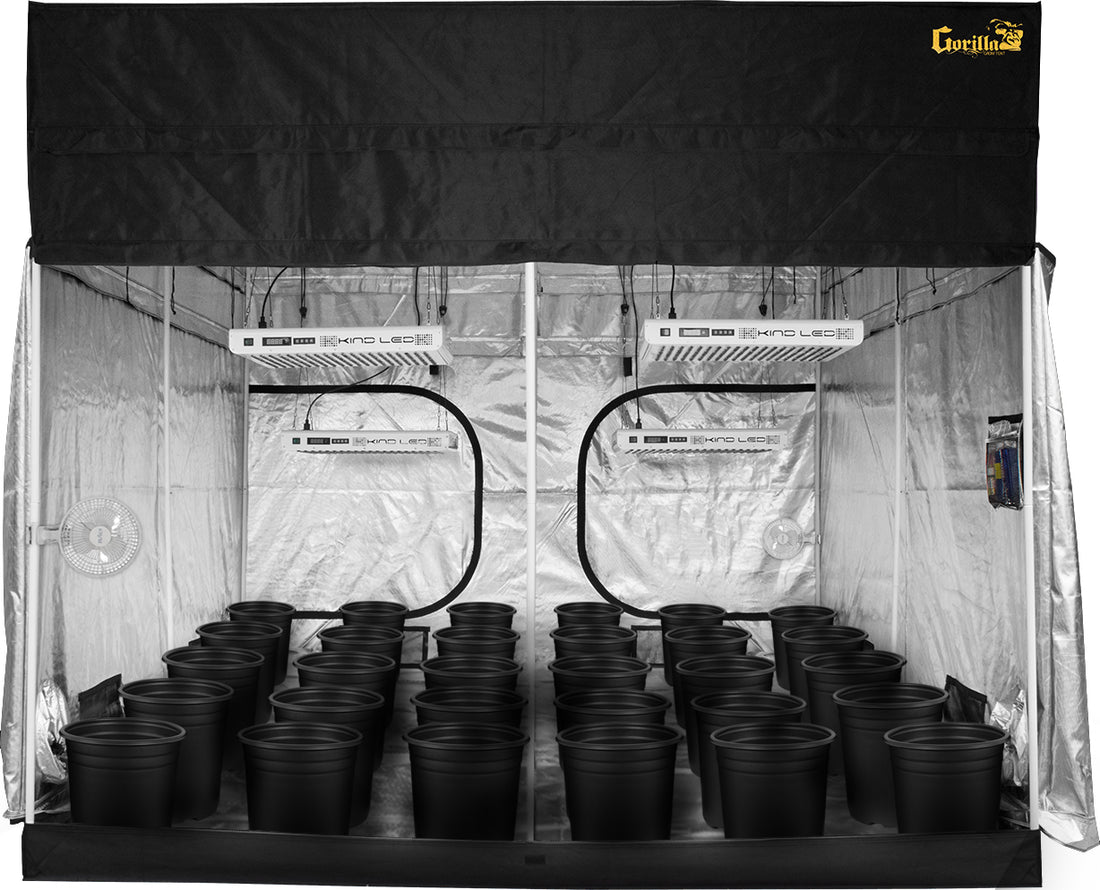
Everything You Need to Cannabis Growing Equipment
Growing cannabis in your basement is a challenging project, but the feeling of accomplishment is well worth the effort; however, it’s important not to be under any illusions, because indoor gardening systems are tricky. There’ll be obstacles, mistakes and failures, but these are all part of the learning process.
Failing to choose the correct equipment is just one of many areas where things can go wrong, which is why it’s important to know exactly what is needed and why.
Lights
There are many different types of lights, some work better than others. Perhaps the biggest factor in any of these areas is price, as many of these items are quite expensive. Fortunately, there are many different options available.
Compact Fluorescent Grow Lights
Compact fluorescent lights (CFL) are a common choice for people who are new to indoor growing systems. They’re inexpensive and easily available at any hardware store. These lights use regular sockets, so growers simply need a spare lamp lying around to use for these bulbs.
Although inexpensive, CFLs trade price for performance. Their low wattage makes them weak compared to other options, making them best suited for smaller operations. They also need to be placed very close to the plant in order to function effectively.
High Intensity Discharge
High intensity discharge (HID) lights are often the go-to for most growers. They fall into the middle range in terms of cost but using them adds considerable additional expense.
Metal halide (MH) lights are the other option, but their increased power can put a huge strain on electrical consumption. Unlike CFLs, HID lights can’t be plugged into a regular socket, so they require their own modified system. They also generate enormous amounts of heat, making additional ventilation necessary.
LED Lights
LED grow lights are by far the best choice in terms of performance. Today, this technology is capable of handling even the largest indoor growing systems.
A huge advantage with these lights is they generate less heat than HIDs and are far more energy efficient. The initial cost of LED devices is steeper than the other choices on this list, however the initial cost of investment is quickly offset by the savings.
Temperature Controls
Cannabis is a finicky plant. If the temperature in the growing area isn’t just right, plants will have issues growing, flowering and producing good yields. In extreme cases, they can die. In order to keep this from happening, you’ll need a few supplies.
Thermometer
This one is pretty straightforward. A thermometer is critical for monitoring the environment’s temperature.
Exhaust
Advanced grow lights tend to give off a lot of heat. In order to counterbalance this, the heat needs a medium to escape. This requires an exhaust fan to pull hot air out from the growing area and expel it outside through a pipe or tube.
An air conditioner can also assist in this regard if setting up an exhaust system isn’t an option in your basement.
Heater
If low temperatures are the issue, then a simple heater can counterbalance this. A mobile radiator works fine, which can be found at any department store or hardware store.
Humidity Controls
Cannabis can only thrive when humidity is at an ideal level. Too much or too little leads to poor yields, mold, inadequate nutrient absorption and more. Again, this is why, like temperature, it’s important to invest in the proper equipment.
Humidity Monitor
The first component is a humidity monitor. Typically, these digital devices also measure temperature, saving growers the trouble of purchasing both.
Dehumidifier
If humidity is too high, a dehumidifier is the obvious tool to use. These portable items are easy to find and relatively cheap, available in department and home improvement stores.
Another option is an air conditioner. Again, portable air conditioners are fairly inexpensive (depending on the make, model and size) and can be found wherever dehumidifiers are sold.
Humidifier
If the basement is dry, then humidity needs to be artificially introduced – hence the humidifier. Many people use these devices regularly, so there’s a good chance you or someone you know will have a spare one on hand. If not, just visit a local department store or hardware store.
Grow Areas
There are different options for where the plants will be placed, such as grow cabinet, grow tents, rooms, etc. For basements, the ideal choice would be a grow tent, as they’re cheaper to build and easy to customize compared to grow boxes.
Grow Tent
Grow tents are available in all shapes and sizes to accommodate small, medium or large basements. These setups consist of a reflective canvas (to amplify the light) and insulation to retain heat. It’s important to also install a ventilation system for the reasons mentioned earlier.
Grow Cabinet
Upon first glance, a grow cabinet resembles a regular office cabinet (assuming you buy a preassembled one). They’re much more stealthy than grow tents, and can be used for both soil or hydroponics growth. Of course, this flexibility comes at a higher price tag, so consider the trade-off here.
Soil and Nutrients
When opting for a soil-based project, then there are some extra supplies necessary. Aside from the obvious soil, it’s important to have the right nutrients on hand to feed the cannabis plants.
Soil
There are many reputable soil brands out there, but shopping around can be daunting. Instead, keep an eye out for specific characteristics as follows:
- Rich in nitrogen and phosphorus
- Organic
- Contains natural fertilizers (i.e. guano, fishmeal or worm castings)
- A PH level between 5.8 and 6.3
- Balance of beneficial fungus and bacteria
Nutrients
Cannabis requires a lot of different nutrients to grow effectively – potassium, nitrogen, calcium, phosphorus, magnesium, sulfur, iron, zinc, chlorine, manganese, cobalt, silicon, boron, copper and molybdenum, to be exact.
The easiest way to obtain these is through pre-mixed supplements, but things like fishmeal, bone meal, dolomite lime and Epsom salts can provide additional nutrients as needed.
